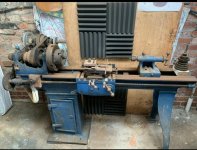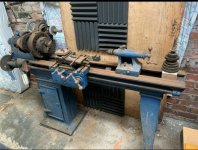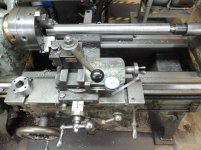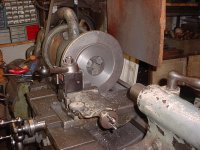The "typical" lathe includes two "systems" for traversing the carriage. A lead screw for cutting threads, and a keyed "feed rod" to drive automatically the apron traverse gears equivalent of using the hand wheel/ball crank used for ordinary turning.
Typically lathe users are advised to not inadvertently engage both feed systems lest the lathe "bind up" on itself (different or opposed feed rates) and break itself. Its either one or the other in actual lathe practice.
Smaller lathes including the Barnes family of lathes (US) mostly used only the lead screw for advancement of the carriage in BOTH threading and ordinary turning. No feed rod (well, some of the larger Barnes lathes DID use a feed rod.)
For Barnes, in threading one followed the gear chart and set up the gears according to plan: for ordinary feed, one uses a "large" gear on the lead screw and some other possibly random arrangement of smaller gears on the banjo to drive the large gear. For ordinary turning on the Barnes lathe, it almost doesn't matter what these smaller gears are - although some gear charts do include "best mated" small gears.
A later lathe development of the South Bend era (roughly 1918-1940s or beyond) the lead screw was provided with a longitudinally cut "key slot" which provided the physical equivalent of an earlier lathe "feed rod." The lathe was designed internally in the apron such that it was impossible to engage both feed systems simultaneously. So safety and production economy was designed in.
You may check your lathe for a spline/key lead screw - it may be "turned" in the picture so we can't see the key-slot. If not there I guess I would put this lathe to a Barnes sort of "lead screw only" use.
You'll just have to be sure of a "large" gear available for ordinary turning using the lead screw.
Joe in NH











